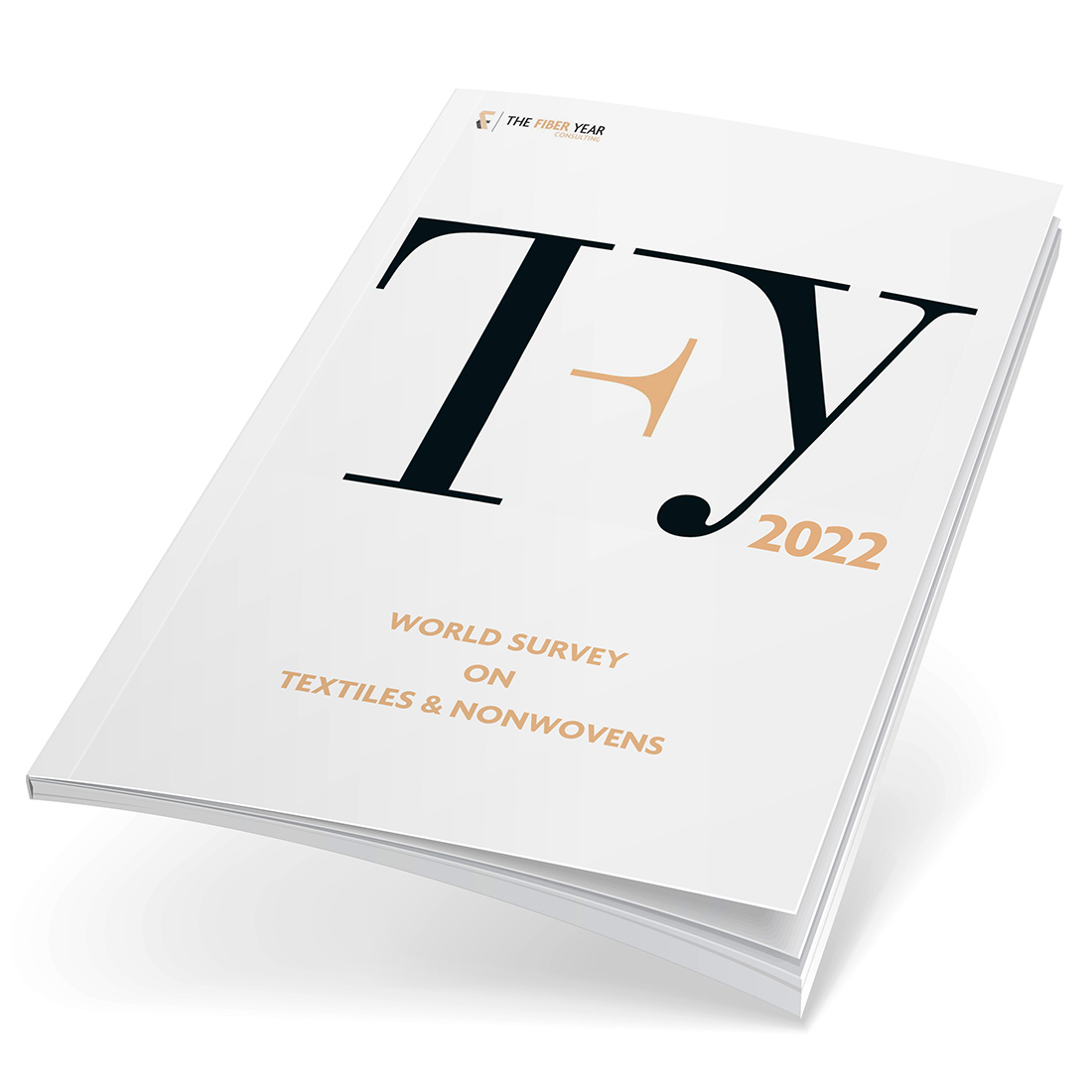Work for The Fiber Year 2022 still is in full swing when writing this article at the beginning of May. Early information on strategic enrichments and key findings in the new textile yearbook will be introduced subsequently.
1.) Breakdown of wood-based cellulosic staple fibers into spinning processes
2.) Changes at supply side
3.) Feedstock investments
Breakdown of wood-based cellulosic staple fibers into spinning processes
The new textile yearbook will, for the first time ever, subdivide the dynamic viscose staple fiber market into spinning processes, thus, structuring into the viscose process for standard and eco-friendly viscose, modified viscose process for modal fibers, lyocell technology and acetate process. This new categorization is to take into account different development speeds in supply and demand.
Consideration of the total market for wood-based cellulosic staple fibers arrived at the conclusion that dynamics during quote-free period accounted for about 6% average annual growth whereas synthetic staple fibers annually grew less than 2%. Contribution from the different spinning processes revealed a range from less than 2% for acetate tow and more than 9% for lyocell fibers.
This makes it seem reasonable to separately analyze the market segments that all together lifted 2021 supply by more than 7% compared with less than 5% expansion of the synthetic staple fiber business.
Fastest rebound in 2021 with double-digit growth rates each was visible in lyocell and modal fibers, while viscose fibers and acetate tow both rather returned to their long-term dynamics.
Innovation of the lyocell process is to dissolve cellulose in an organic solvent, which is much less resource-intensive than the traditional viscose process. It results in a significant reduction in chemical use due to conversion of pulp into fiber in a closed-loop process for best-possible environmental safety. Several investments make sure persistent dynamics of this sustainable fiber in the future.
In addition, recycling resounds throughout the textile and apparel industry with an increasing number of expenditures beyond bottle recycling in polyester targeting circularity. Hence, a couple of textile recycling technologies for wood-based cellulosic fibers will be introduced, even if today’s volumes are small but expected to offer meaningful potentials in the future.
Changes at supply side
The general market trend for 2021 is quite clear even if late incoming market data may ultimately lead to marginal changes.
Firstly, it is quite obvious that the previous year’s supply witnessed fastest expansion of manmade fibers in more than a decade while both natural fibers and spunlaids suffered from distinct decreases.
Secondly, market development was characterized by expansions across the globe with Chinese growth rate even outperformed by a number of industries such as Indonesia, Korea, Pakistan, Taiwan, Turkey and Vietnam recording robust double-digit increases.
Thirdly, accelerated pace of expansion than world supply, at around 4%, is anticipated for demand that enjoyed faster recovery and final figures for the processing stage will be presented in Q3 again in the webinar, “The Fabric Year,” in cooperation with Groz-Beckert.
Feedstock investments
The period of massive polyester raw material investments between 2019 and 2022 will obviously be followed by a significant slowdown. Last year came along with the start-up of more than 20 lines for MEG, PTA and PX, primarily in PR China with rising Chinese self-sufficiency putting increasing pressure on major Asian suppliers. Another reason for potential slowing of feedstock capacity additions derives from the increasing usage of recycled materials and investments of billions of dollars in chemical recycling technologies.
Recycling resounds throughout the textile and apparel industry with an increasing number of expenditures beyond bottle recycling in polyester targeting circularity. Hence, a couple of textile recycling technologies for wood-based cellulosic fibers will be introduced.
Nylon feedstocks witnessed the fastest growth in the century for nylon 6 with capacity additions coming on-stream in the Chinese industry only and further expansions are planned for the next years. Far-reaching impact on the global nylon 66 industry is expected due to enlarged Chinese raw material availability following some projects scheduled for start-up in 2022-23.
Nameplate capacity of dissolving pulp soared at the fastest pace in history with several more projects in the pipeline across the globe. The business is characterized by an increasing degree of integration of pulp and fiber capacity at major suppliers like Lenzing and Royal Golden Eagle.
The next installment of “The Fiber Year” column will take a look at facts and developments described in the 2022 report that is scheduled for release in late May.


